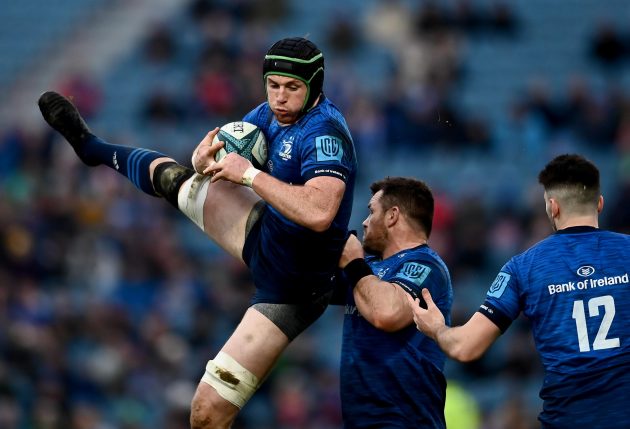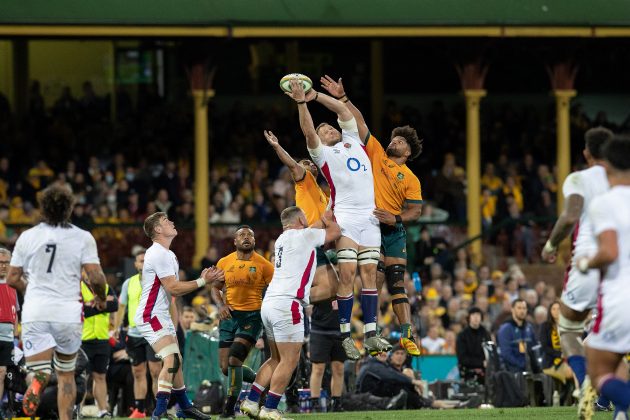With the help of elite coaches and data from Rugby Analytics, we take a deeper look at kick-off receptions and the skills needed in the modern game
Analysis: The art of kick-off reception
Kick-offs are often described as the ‘third set-piece’. And there is no denying the importance of a well-drilled receiving corps. After all, how frustrating is it to watch the team you love score some points, only to spit out the next kick-off reception?
It was something that frustrated Scotland fans during their series-deciding match against Argentina on Saturday.
Restarts
Why are Scotland so bad at reclaiming restarts?
Has been dreadful for far, far too long
— Gav Harper (@Gav_S_Harper) July 16, 2022
In the modern game, when it comes to waiting for the next kick, it pays to know your stuff.
“We look at how the next opposition kick for at least four or five games back,” explains Dewald Senekal, the Connacht forwards coach. “And we have something like a pitch map, to show where that ball is actually kicked by them.”
Considered a student of the restart, Senekal talks us through the homework.
“It’s about trying to track the trajectory (they like) – is it a long flat kick, is it a loopy short kick, is there hang time into the 22 or as far back as they can? That tells us a little more about our opposition. So we map where those balls actually come down, where we will be catching those balls. And those pitch maps are very specific to left-footed kicker, right-footed-kicker, different kicker profiles.
“We’re looking at where the kick-offs go and then how we actually set up, and make sure that we’ve got our best players – almost like specialists – in those areas.”
According to Rugby Analytics, good teams should claim at least 95% of restarts kicked to them. As you will see from the below graphic, which plots every kick-off in the recent New Zealand-Ireland series, only one restart led to an opposition error as they went for the kick.
You can also see just how many kicks were contestable and, in the middle graphic, which areas the two teams targeted throughout the series with their restarts (all field maps show left-to-right, so you see the concentration of kicks more clearly).

(Contestables, all kicks and wins from all New Zealand v Ireland games. Rugby Analytics)
In fact, we can look at the data from every single kick in the Home Nations series: Australia v England, New Zealand v Ireland, South Africa v Wales, and Argentina v Scotland (grouped on the left of the below graphic). This gives you a sense of where balls were being rained down.
As you can see, 58% of kicks were put into areas that couldn’t be contested, but that meant the receiving team were usually pinned into their own territory (12% of catchers were stopped, man and ball).

(Contestables over all series. Via Rugby Analytics)
Only once this summer was there a kick that didn’t go the full 10m. But we can give you a little more on the results overall too.

(Restarts won or lost. Via Rugby analytics)
The above graphic shows overall how many restarts were lost by the receiving team across all of the June and July series – just 11. And as for Scotland, here are their own series numbers at reception time…

(Scotland kick-off receptions in Argentina. Via Rugby Analytics)
In the third set-piece, you need to get the process right.
Component parts of kick-off reception
According to Connacht’s Senekal, the inexperienced kick receiver will run to the ball without assessing trajectory or potential targets around them. But as long as you work with good kickers (doing actual drop-kicks, he stresses), you can coach players to track balls in the air. However, you need to know what’s important.
Senekal says: “We’ve got a three-phase system from the moment the ball is kicked. So first would be to identify whose priority is the ball. So if I shout “Dewald!”, everybody knows I’m the priority, I’m taking it or it’s on my line, or my zone.
“From there, I’ll try to set myself in line with the ball. So it goes right over my head. That’s so at the last moment I don’t have to make lateral adjustments. The moment your line is right, you only have to adjust forwards or backwards. Because lateral, plus forwards or backwards, is difficult.
“Then the lifters shadow that guy. You don’t want them to cramp his movement but the moment he says ‘set’, then they know that’s the spot I will jump. They know to come close. Those are the technical parts of having good communication. That’s for every unit of guys. So at Connacht, I know that Jordan Duggan will always go with Oisín Dowling, because they work really well together, for example.”

Ryan Baird of Leinster catches a restart (Getty Images)
In the modern game, many teams try to cover a whole field with pods of two – a jumper and a lifter. Gone are the old school days of every team plopping a pod of three (two lifters and a jumper, pre-bound) and hoping the ball comes down in their nearest radius. The dream scenario is that you have a pod of three catching the ball at its apex, and this should forever beat any individual running and jumping for the ball. But you need flexibility.
And of course this isn’t a forwards-only thing, guys. Which is a sentiment Stormers forward coach Rito Hlungwani is in lock-step with.
As he explains of the URC-winning side: “We set our jumping (lock-prop) pod very flat. We rely on our wingers to catch most of our kick-offs. The ‘jumping’ pod’s role is to create a bubble in front of the winger just to slow down the opposition on the chase.
“We also work extremely hard on getting them to turn the corner and clean the breakdown after the bubble. We train this component as a mini unit on Tuesdays. The players also train it as an extra after sessions. The formation of the team set-up is also designed to create a running option or an easy exit kick.”
The basics rarely make highlights videos but I have rarely seen an @AllBlacks team get so little return from High Balls (both send & receive). How they adapt tactically will have a big bearing on the Series result. Maybe avoid POM on restarts!!! #NZTour2022 #NZvIRE #NZLvIRE pic.twitter.com/JC7syfFBhs
— Bernard Jackman (@bernardjackman) July 10, 2022
As you can see from the package above, from Bernard Jackman, there is an art to catching in retreat – or at least moving laterally.
Senekal gives us a bit more on the whole-team approach to kick-offs, saying: “The guy more important in (most) scenarios is the basket.
“Quite often behind the forwards would be a back in the zone. That guy’s role is really important because obviously, it being such a difficult technique, sometimes your read is a little bit wrong and the ball goes over your head. So you want that basket, that back, that extra man. And his mindset must be that you’re missing the ball every single time.”
According to the Connacht coach, his group will not see out a captain’s run without catching ten kick-offs in a row, above heads. And in training a favourite drill is getting the stand-off to go behind the posts and take drop-goals – from varying distances – so the forwards can set up in the area the ball is expected to drop, and work on their techniques. If the other backs are available too, to work as ‘baskets’, brilliant.
On other training techniques, Hlungwani says of the Stormers: “The only constraints drills we do involve using different balls, as they travel at different speeds. The main one would be tennis ball kick-offs. The pod and the winger behind track a tennis ball that’s smashed with a racket. Straight after that we use a soccer ball and then a rugby ball. We feel these constraints improve the tracking and timing skills.”

Stormers forwards coach Rito Hlungwani (Getty Images)
The message the coaches give is clear: in the elite game, you cannot take anything for granted with your kick-off reception. Confidence and cohesion will also aid your cause.
However, you cannot cover every base and while you might drill elements of this over and over, it helps to know the in-built limitations too. As Senekal notes of the cross-field spread: “The difficulty for a pod of two is that you can go backwards but you can’t go too far back, which is why you’ve got your basket man. It’s easy to go forward but for a lot of two-man pods you’re pre-bound, so it’s difficult to move left or right.
“So short kicks into those zones are more difficult to catch sideways, at 45 degrees. So there are real opportunities to move guys laterally, with short kicks, and really contesting that.
“And then the other thing that I always look at is if the opposition put a hooker or a prop in for a front lifter. Because if you kick short on those guys, they never catch a ball above their head like a lock or a back-row do in the lineout. It’s a skill foreign to them. So there are opportunities to put them under pressure.”
Remember those cringing moments when a vital score is followed by a dropped kick-off. It’s incredibly important. Which means investing time and brain power for it. Of course, this is just the receiving side of it we’re focusing on. Then there’s the other world of possibilities when kicking off…
Data provided by Rugby Analytics. Find them at rugbypass.com/rugby-analytics.
Download the digital edition of Rugby World straight to your tablet or subscribe to the print edition to get the magazine delivered to your door.
Follow Rugby World on Facebook, Instagram and Twitter.






